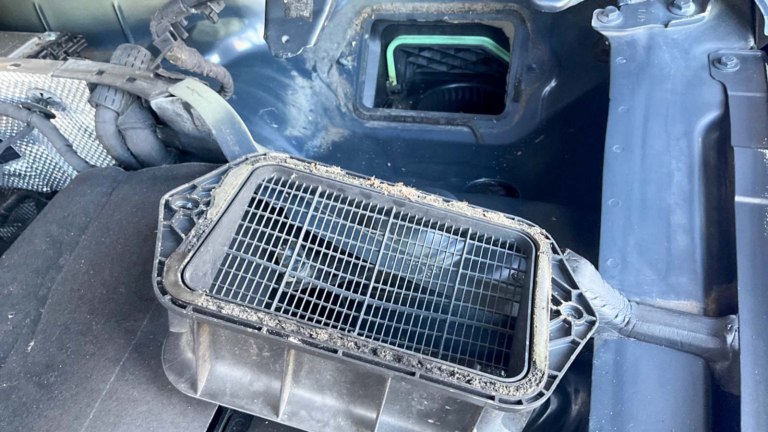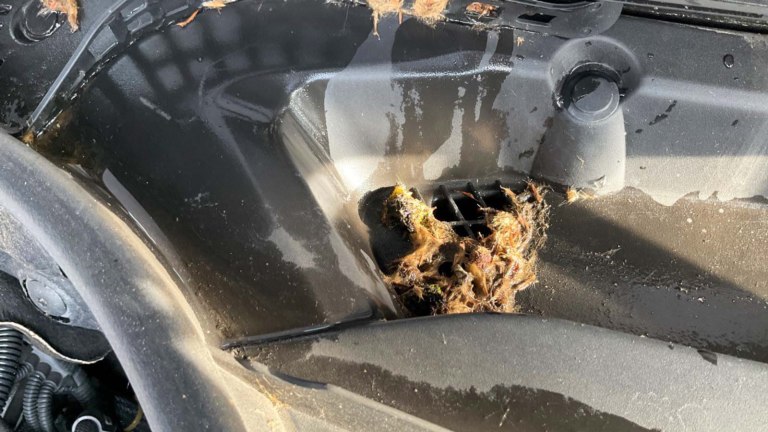Why does my car leak when it rains?
Quick answer: Most rain leaks come from four things — ageing seals/adhesives, blocked drains (sunroof, scuttle, doors), after market mods that pierce or disturb membranes and grommets, and past repairs or windscreen replacements that leave bungs or seals out of place. Older cars can develop more than one leak at once.
All cars can leak and there are an almost unlimited number of points of ingress, but generally, the causes of leaks fall into four main categories:

Age
When a car gets to 8–12 years old, plastic and rubber parts begin to perish. Your car contains dozens of grommets, bungs, washers, gaskets, membranes and seals which keep water out. Over time, they can harden, compress, shrink, crack, split or disintegrate. The same can also be true of sealants and adhesives.
Because all these rubber parts on your car are roughly the same age, they will perish at roughly the same rate, so it is not unusual for your car to spring multiple leaks at the same time. This is why, for example, if one of your door membranes is leaking, we recommend replacing the other three that are not. They soon will be.
Another example, are drainage pipes on sunroofs. These are soft neoprene tubes which take water from a tray around the sunroof and drains the water out under the wheel arches. Over time, these pieces of hose will shrink, sometimes by as much as four inches, causing them to pop off the connectors, which are made of nylon and may also perish and shatter.

Blockages
Cars need to breathe, and so they are full of holes which let air in and out. There are other holes for drainage to channel water away and drop it out of the bottom of the car.
An Example would be the afore mentioned sunroof drainage system. Another is on the doors, where water can pass through them and exit drainage holes at the bottom. Yet another is the trough under your windscreen under the scuttle plate.
Over time these drainage systems can become blocked with dirt and dry leaves, causing water to back up and overflow into the holes in the car that are designed to let air in.
A good example is the trough under your windscreen, which often has two large holes on either side to drain water. If these become blocked, the trough can fill with water and flow into the pollen filter.
Another cause of leaks we sometimes see is from broken glass. If a side window is smashed and a window is replaced, sometimes they don't do a very good job of cleaning up the old broken glass in the bottoms of the doors, which can then block the drainage holes, causing the doors to fill with water.
Modifications
Fairly frequently, we see leaks caused by modifications to the car. In the vast majority of cases, this is due to extra electrical equipment being fitted to the car. It may be sensors or cameras, but more often it is audio systems.
These 'technicians' may drill holes where holes don't belong, remove bungs, tuck wires under door rubbers, pass additional wires through grommets designed for one wire, or they may cause damage to fixtures and fittings to gain access. We have frequently seen holes cut in waterproof door membranes in order to accommodate larger speakers.
Repairs
Thankfully, less frequently, we see leaks on cars that have been in a crash which have been repaired. A serious crash can knock a car's body out of square, crack welds, and a host of other problems that are almost too numerous to list.
Although the car may have been repaired, and repaired well, it might not be apparent to the repairer that something is amiss. There are lots of holes in the bodywork, which may be to let air in and out, or they may be for access to allow you to poke a screwdriver in. If a rubber bung or blanking plate is missing, it might not be apparent to the repairer. We occasionally see sets of rubbers put on misaligned or up-side-down. In fairness to the body shops, it is not often obvious which way up they are supposed to go or that it might be important.
The good news here is that if the repair work was done under insurance, the insurer may take responsibility for the cost of the leak.
This article wouldn't be complete without a special mention of replacement windscreens, which are one of the most frequent causes of leaks that we see at New Again.
Written by Danny Argent. Last updated 03/09/2025 18:40
-
Why not just sell your leaky car?
Cars with water leaks can be very frustrating, and it's tempting to just try and get rid of it. However, many good reasons to get it fixed. -
About Our Car Water Leak Diagnostic Service Video
Have you discovered that your car might have a leak and you are wondering what to do? -
How much water is in a leaky car?
A video demonstrating that there is probably a lot more water under your carpets than you might think. -
Service: Car Water Leak Diagnosis Service
If you have rain water ingress in your car, that you need repaired, but not sure where the water is coming from, our diagnosis service will find it, so we can fix it.
